Death
Usnea, or Skull Moss
Source: Howard W. Haggard, Devils, drugs, and doctors (1929).
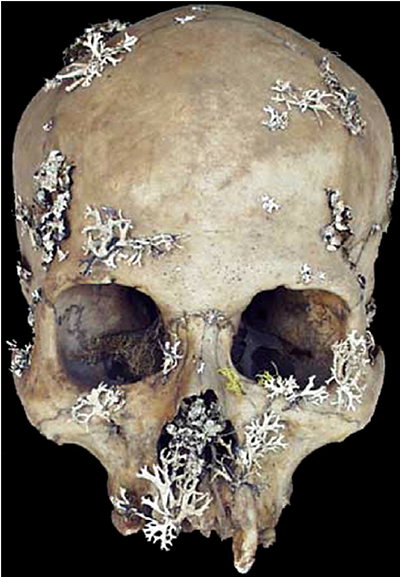
image source: reddit
More info from Frances Larson, Severed: A History of Heads Lost and Heads Found (2014):
There were reports of people growing moss on stones and then spreading it onto the skulls of criminals, as a way of harvesting the tiny green plants for sale. In practice, apothecaries probably used anything that grew on skulls, and some things that did not grow on skulls, to maintain their supplies.
Posted By: Alex - Fri Apr 29, 2022 -
Comments (0)
Category: Death, Medicine, Patent Medicines, Nostrums and Snake Oil, Renaissance Era
Death’s Doings
Next time you need cheering up, have a gander at this jolly volume, available at the Internet Archive.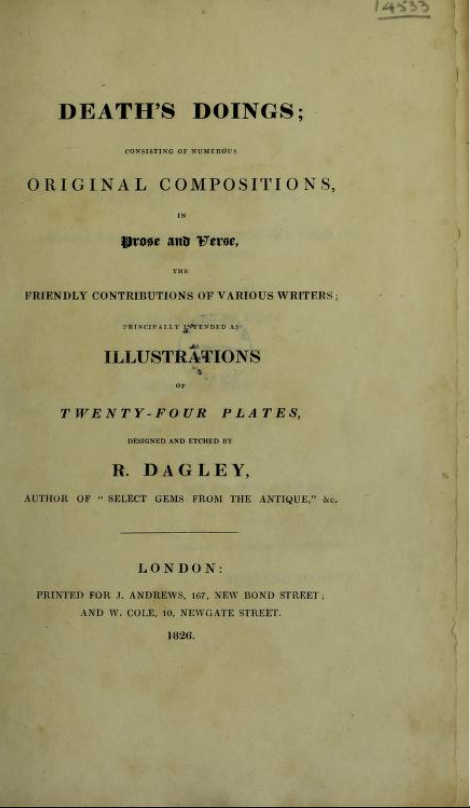
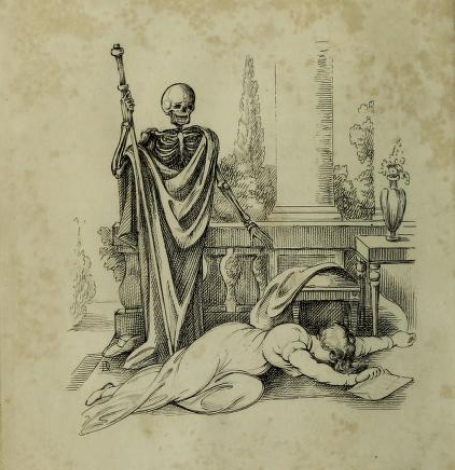
Posted By: Paul - Tue Apr 26, 2022 -
Comments (0)
Category: Death, Books, Nineteenth Century
Six drown trying to save chicken
Actually, only one of them jumped into the well trying to save a chicken. The others were trying to save humans. But still, it was a mass tragedy apparently started by an attempt to save a chicken.
Edmonton Journal - Aug 2, 1995
Posted By: Alex - Mon Apr 04, 2022 -
Comments (1)
Category: Animals, Death, 1990s
Electroplating Corpses
Hugo Gernsback, the father of modern science fiction, offers a new mode of embalming.Source.
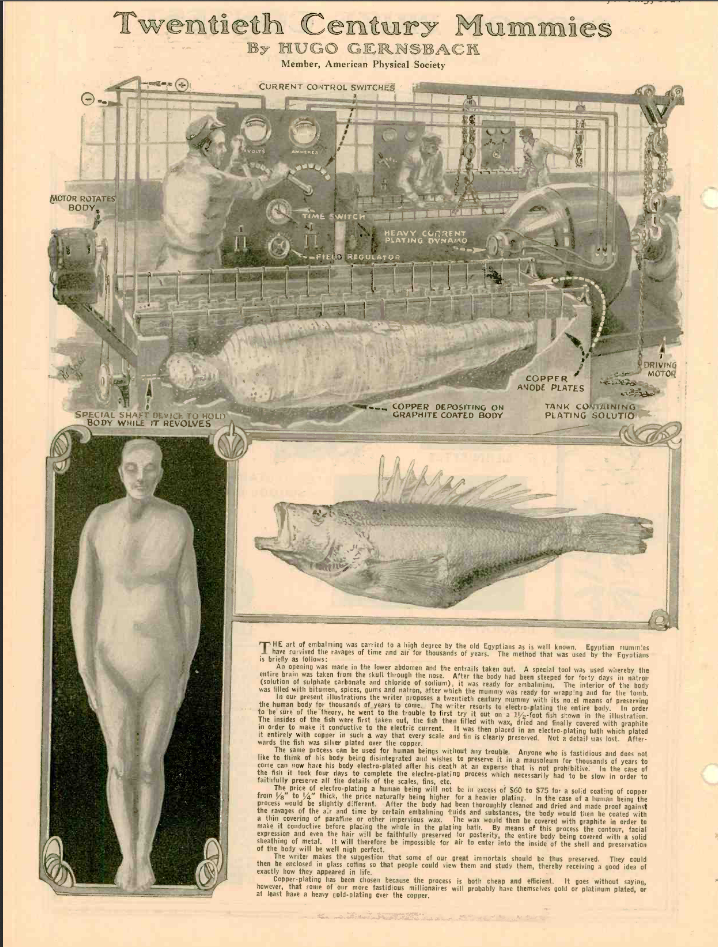
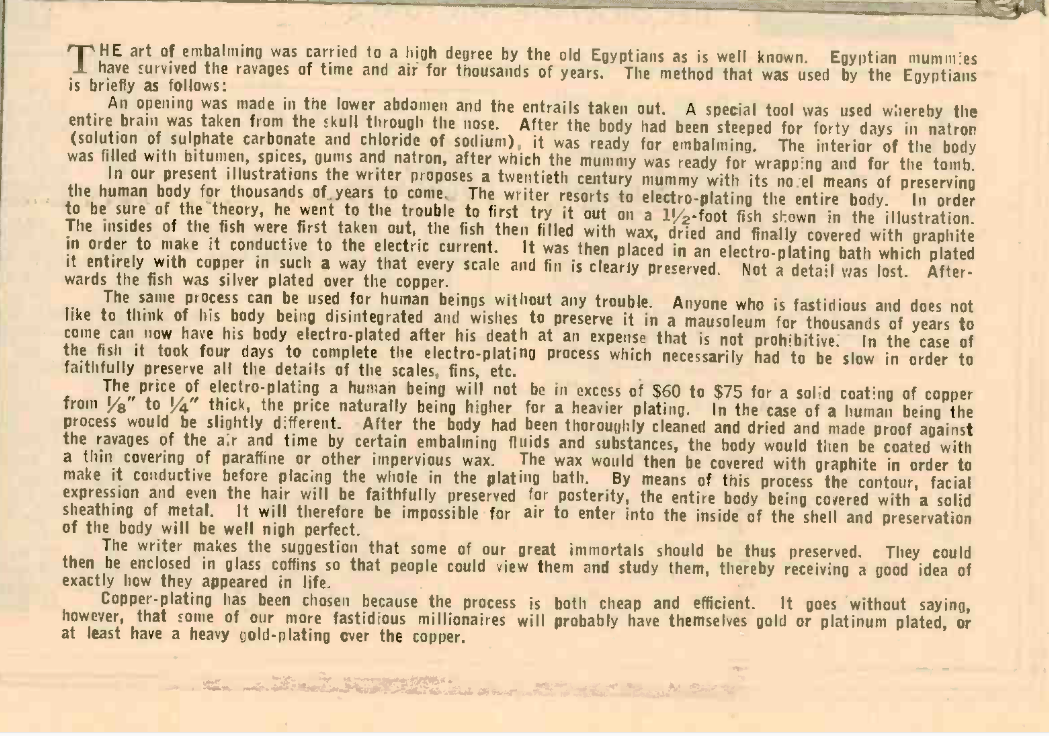
Posted By: Paul - Tue Mar 29, 2022 -
Comments (1)
Category: Death, Inventions, Cemeteries, Graveyards, Crypts, Mortuaries and Other Funereal Pursuits, 1920s
Death by Drama
Paul posted last week about a real-life murder that occurred onstage during a play. This reminded me of another onstage death I once read about in Jody Enders' book Death By Drama and Other Medieval Urban Legends.The death is said to have occurred in 1549, during a performance of the play Judith and Holofernes, which tells the Biblical (or Biblical apocrypha) story of Judith who cuts off the head of an Assyrian general, Holofernes. The producers of the play supposedly decided it would add a touch of realism if the actor playing Holofernes really was decapitated.
The details from Enders' book:
Jean de Bury and Jean de Crehan, duly charged with decorating the streets, had imagined rendering in its purest form the biblical exploit of Judith. Consequently, for filling the role of Holofernes, a criminal had been chosen who had been condemned to have his flesh torn with red-hot pincers. This poor fellow, guilty of several murders and ensconced in heresy, had preferred decapitation to the horrible torture to which he had been condemned, hoping, perhaps, that a young girl would have neither the force nor the courage to cut off his head. But the organizers, having had the same concern, had substituted for the real Judith a young man who had been condemned to banishment and to whom a pardon was promised if he played his role well.
The story goes that the two substitutions were accepted by the two unnamed men. Being an actor / executioner was apparently preferable to being banished, and death by decapitation during drama was preferable to being skinned alive (something that the Eel of Melun might himself have understood).
"Judith" had only one condition to meet: to provide acting so good that it wasn't acting at all. . .
The fantastic narrative next shows Philip arriving just as the axe is falling. As real blood supposedly begins to flow, it prompts applause in some, indignation in others, and curiosity in the prince, who remains implacable as the body of "Holofernes" goes through its last spasms:
In fact, as Philip approached the theater where the mystery play was being represented, the so-called Judith unsheathed a well-sharpened scimitar and, seizing the hair of Holofernes, who was pretending to be asleep, dealt him a single blow with so much skill and vigor that his head was separated from his body. At the [sight of] the streams of blood that spurted out from the neck of the victim, frenetic applause and cries of indignation rose up from amid the spectators. Only the young prince remained impassive, observing the convulsions of the decapitated man with curiosity and saying to his noble entourage: "nice blow".

Enders has doubts this onstage execution ever really took place, but can't rule out the possibility altogether.
In the story's favor: Philip II really did go to Tournai in 1549; Jehan de Crehan was a real person; there really were plays performed in Philip's honor; and Tournai had a history of executing heretics, and of offering decapitation as a "kinder" alternative to more gruesome forms of execution.
The points against the story's veracity: not a single, extant contemporaneous source mentions this onstage decapitation. The first references to it only appear several hundred years later. And it stretches credulity to imagine that a condemned prisoner would obligingly play his part in the performance, even to the extent of pretending to be asleep before he was decapitated.

Posted By: Alex - Fri Mar 18, 2022 -
Comments (4)
Category: Death, Theater and Stage, Fables, Myths, Urban Legends, Rumors, Water-Cooler Lore, Sixteenth Century
Rocket-Powered Iceboat
Before we leave winter behind entirely, let us ponder this refinement of a cold-weather recreation.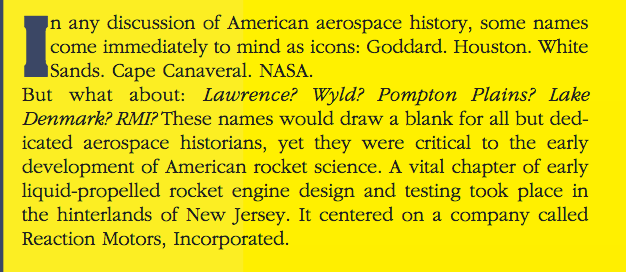
This company had a rich and fascinating aeronautical history which you can read at the link. But surely we afficionados of the weird will want to honor them for creating a rocket-propelled iceboat.
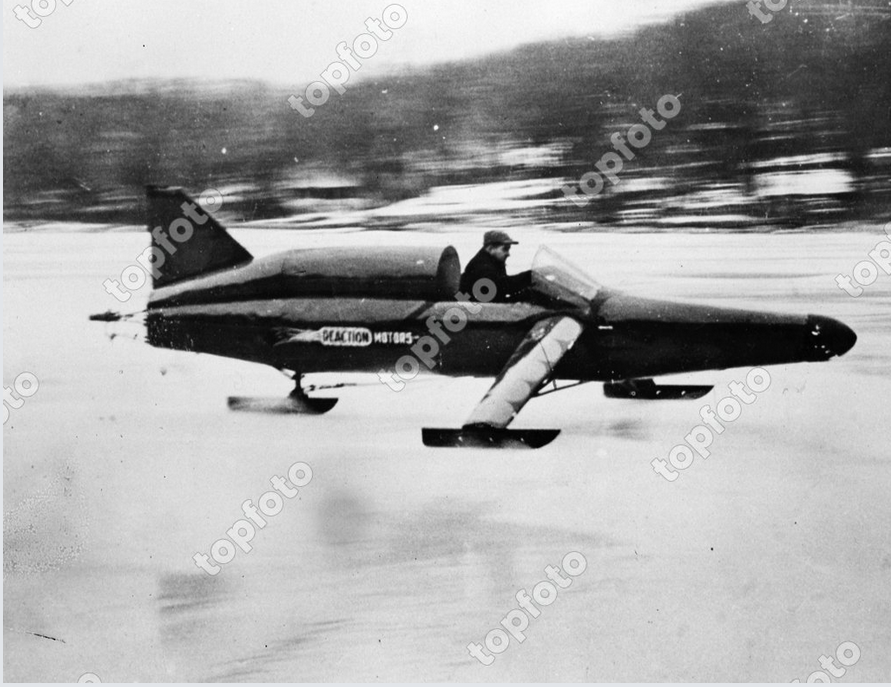
Rocket iceboat can do 250 miles per hour A rocket-propelled iceboat capable of a speed of 250 miles an hour on smooth ice has been designed by Reaction Motors , Inc of America , and tested on frozen Lake Hopatcong New Jersey . The boat weighs 1,648 pounds. Photo shows: The iceboat streaking over Lake Hopatcong piloted by Puck Wellington. It was travelling at 95 miles an hour , rough ice and snow patches made higher speeds dangerous . 7 March 1947
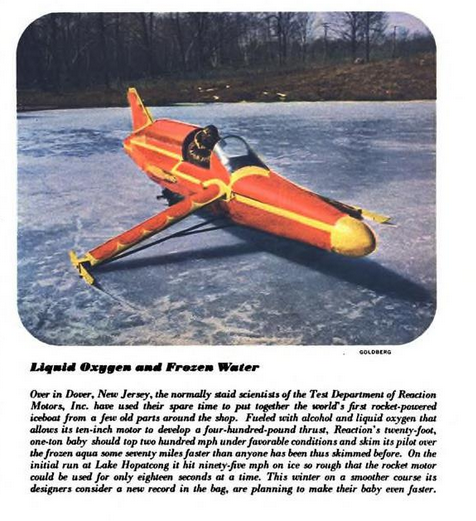
Posted By: Paul - Thu Mar 17, 2022 -
Comments (1)
Category: Death, Oceans and Maritime Pursuits, Technology, 1940s, Outrageous Excess
Hairdresser in a glass coffin
Celebrity hairstylist Antoine de Paris used to sleep in a glass coffin, which he claimed he would one day be buried in. He died in 1976, and whether he actually was buried in the glass coffin I haven't been able to find out.Info from Logan Sisley:

Dayton Daily News - Mar 25, 1932

"M. Antoine in the curious burial costume he has designed for his funeral"
From The San Francisco Examiner - Sep 25, 1932:
But models die, get married, get fired, while Antoine continues to live. Always he must be replacing the original ones. He picks them out for their gaiety and their good looks.
More info: Polish Fashion Stories
Posted By: Alex - Tue Mar 15, 2022 -
Comments (4)
Category: Death, Fashion, Furniture
Unlikely Reasons for Murder No. 8

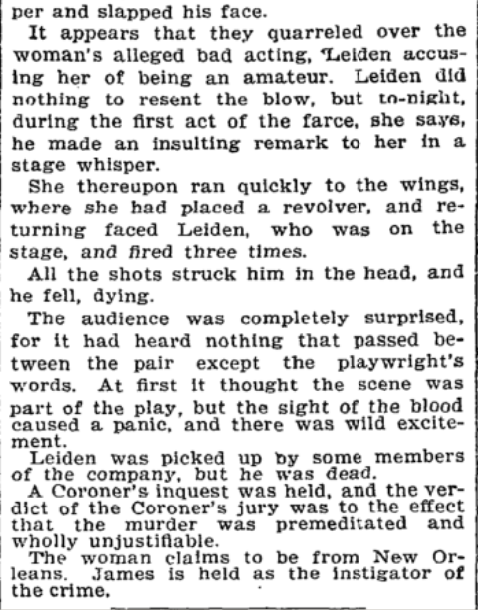
Source: NYT for 9/23/1899.
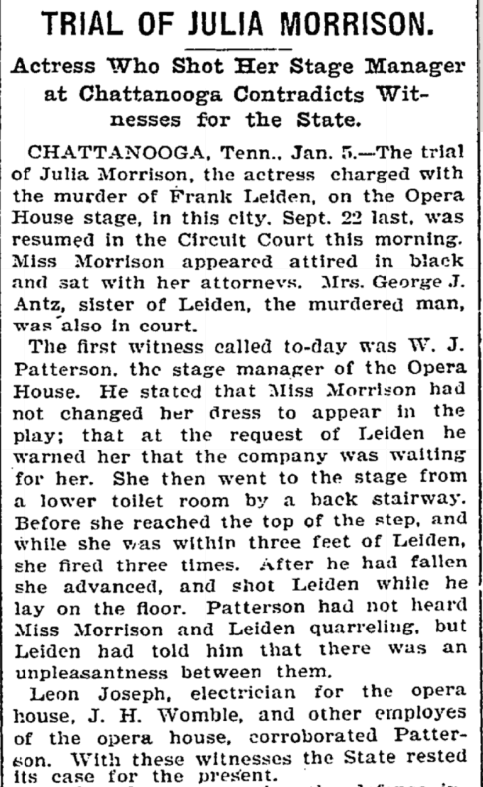
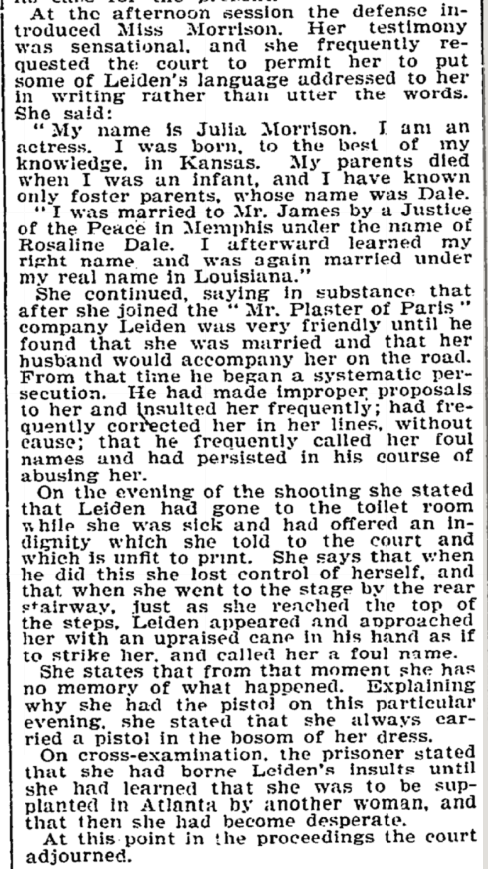
Source: NYT for 1/6/1900.
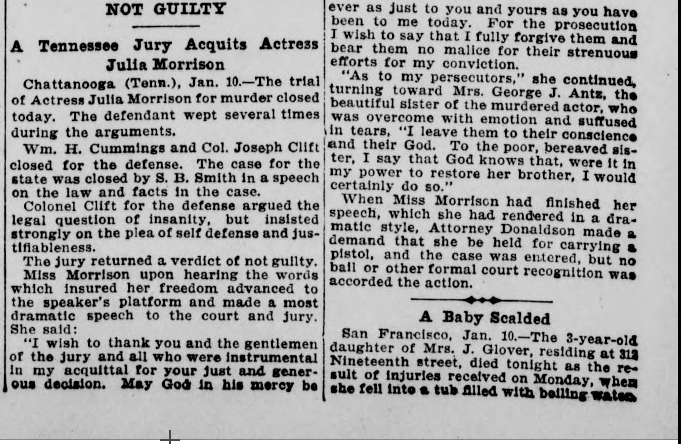
Source.
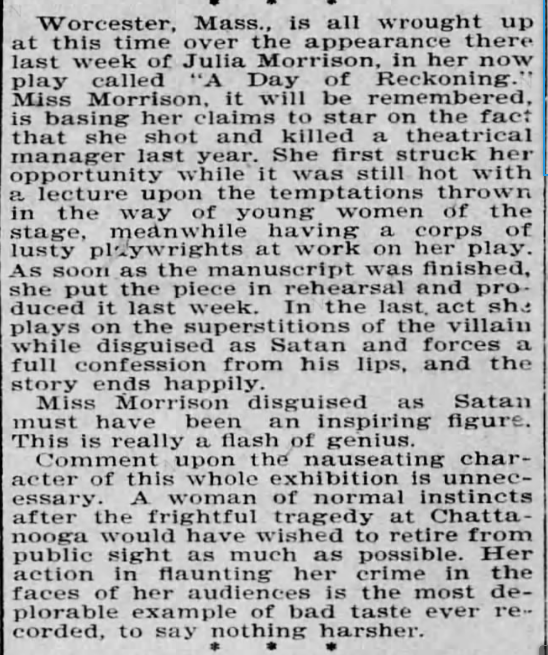
Source: Reading Times (Reading, Pennsylvania)01 May 1900, Tue Page 3
Posted By: Paul - Fri Mar 11, 2022 -
Comments (3)
Category: Crime, Death, Theater and Stage, Women, Nineteenth Century, Twentieth Century
Buried in Snuff
Margaret Thompson of London was buried on April 2, 1776. Her will directed that her casket should be filled with snuff, and that snuff should be liberally handed out to the crowd at her funeral.I also desire that all my handkerchiefs that I may leave unwashed at the time of my disease, after they have been got together by my old and trust servant, Sarah Stuart, be put by her alone, at the bottom of my coffin, which I desire may be large enough for that purpose, together with such a quantity of the best Scotch snuff (in which she knoweth I always had the greatest delight) as will cover my deceased body — and this I desire more especially, as it is usual to put flowers into the coffin of departed friends, and nothing can be so fragrant and refreshing to me as that precious power.
But I strictly charge that no man be suffered to approach my body till the coffin is closed, and it is necessary to carry me to my burial, which I order in the manner following:
Six men to be my bearers, who are well known to be the greatest snuff takers in the parish of St. James', Westminster—and instead of mourning, each to wear a snuff coloured beaver, which I desire may be bought for that purpose, and given them.
Six maidens of my old acquaintance, viz. &c. to bear my pall, each to wear a proper hood, and to carry a box filled with the best Scotch snuff, to take for their refreshment as they go along. Before my corpse I desire the minister may be invited to walk, and to take a desirable quantity of the said snuff, not exceeding one pound; to whom I bequeath two guineas on condition of so doing. And I also desire my old and faithful servant, Sarah Stuart, to walk before the corpse, to distribute every twenty yards, a large handful of Scotch snuff to the ground, and upon the crowd who may possibly follow me to the burial place—on which condition I bequeath her £20. And I also desire, that at least two bushels of said snuff may be distributed at the door of my house in Boyle street.
Source: Euterpeiad, or, Musical Intelligencer & Ladies' Gazette - June 28, 1821
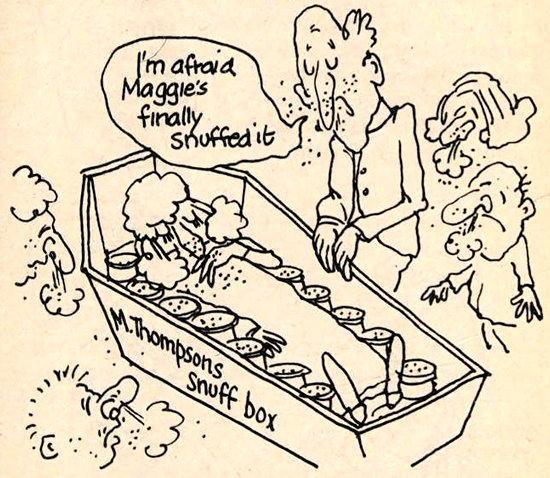
Source: Crazy - But True!, by Jonathan Clements
Posted By: Alex - Sat Mar 05, 2022 -
Comments (4)
Category: Death, Inheritance and Wills, Eighteenth Century
Druid Priest William Price
Dr. William Price (1800-1893) led a highly eccentric life. Some details from an article about him on bbc.co.uk:- He "ate no meat, drank mainly champagne, eschewed the wearing of socks and prescribed a vegetarian diet for his patients instead of medicine."
- He had a liking for outlandish costume, "notably a fox-skin headdress with the legs and tails hanging down over his shoulders and back."
- "He became fascinated by the old druidic rites and even held druidic ceremonies at the rocking stone outside Pontypridd."

Price in 1884 wearing his druid attire. Source: MarkBerePeterson.com
However, his main claim to fame is that he helped to bring about the legalization of cremation in Britain.
Supporters of cremation had been trying to get it legalized throughout the nineteenth century. But Price caused the issue to come to a head by burning the body of his five-month-old son, Jesus Christ, on a funeral pyre, after the child had died a natural death. Yes, he had named his son Jesus Christ, or "Iesu Grist" in Welsh.
Price was arrested and charged with the crime of illegal cremation. His eventual acquittal led directly to the passage of the Cremation Act, which made it legal to burn bodies in Britain.
When Price himself died in 1893 he was cremated on a giant funeral pyre as thousands of spectators watched.
However, it's worth noting that while cremation is now legal (and commonplace) in the UK and USA, open-air pyres aren't legal, as far as I know.
More info: wikipedia
Posted By: Alex - Fri Mar 04, 2022 -
Comments (1)
Category: Death, Eccentrics, Nineteenth Century

| Who We Are |
|---|
| Alex Boese Alex is the creator and curator of the Museum of Hoaxes. He's also the author of various weird, non-fiction, science-themed books such as Elephants on Acid and Psychedelic Apes. Paul Di Filippo Paul has been paid to put weird ideas into fictional form for over thirty years, in his career as a noted science fiction writer. He has recently begun blogging on many curious topics with three fellow writers at The Inferior 4+1. Contact Us |




